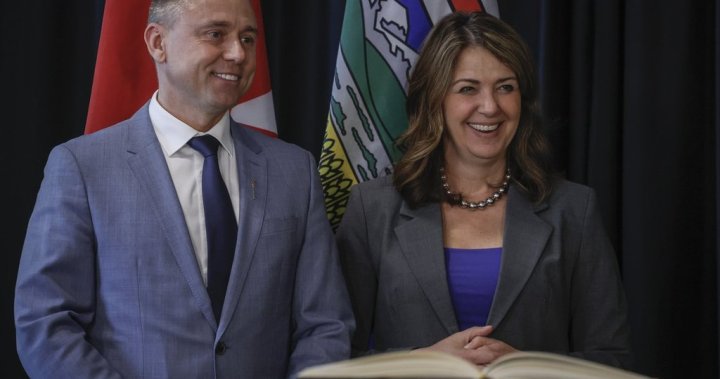I’ve been covering Alberta politics for over a decade now, and rarely have I seen policy implementation generate such heated debate while containing exemptions that seem to undermine its stated purpose. The Alberta government’s new transgender sports policy, which officially takes effect this fall, contains what many are calling a significant loophole – visiting athletes from outside Alberta aren’t subject to the same restrictions.
Standing outside the legislature yesterday afternoon, watching protestors on both sides of this issue, I couldn’t help but wonder about the practical implications of this policy’s implementation. After speaking with several sports administrators, legal experts, and community members, the complexity of the situation became increasingly apparent.
The policy, announced by Premier Danielle Smith earlier this year, prohibits transgender women and girls from competing in female sports categories within Alberta. However, documents recently obtained through freedom of information requests reveal that out-of-province athletes are exempt from these restrictions when competing in Alberta.
“This creates an inconsistent playing field,” says Sarah Martinez, director of a Calgary youth sports association. “Our local athletes face one set of rules while competitors from British Columbia or Saskatchewan operate under different standards. It raises serious questions about competitive fairness.”
According to the Alberta government, the policy aims to protect the integrity of women’s sports and ensure fair competition. Premier Smith has repeatedly emphasized that the policy is about “protecting women’s spaces” and “ensuring fair competition.” When I reached out to the Premier’s office about the exemption, a spokesperson indicated the policy focuses on Alberta-based organizations and participants.
“The intent was never to dictate terms to other provinces,” the spokesperson explained. “We respect jurisdictional boundaries while protecting the interests of Alberta women and girls.”
The Alberta Sports Connection estimates approximately 300 competitive events annually involve out-of-province participants. Many of these events, particularly at high school and university levels, would operate under this exemption.
Dr. Rebecca Thomas, a sports policy expert at Mount Royal University, points to the practical challenges. “Tournament organizers now face the prospect of having different eligibility rules for local versus visiting athletes. This creates administrative nightmares and potential legal exposure.”
Data from Statistics Canada suggests transgender individuals represent approximately 0.33% of the Canadian population. While specific numbers for competitive sports participation aren’t readily available, sports administrators I’ve spoken with suggest the actual number of affected athletes in Alberta is likely very small.
Walking through Lindsay Park yesterday, I watched a women’s softball tournament with teams from across Western Canada. Speaking with several coaches, none could recall instances where transgender participation had created competitive issues in their leagues.
“We’re implementing solutions to problems that largely don’t exist,” remarked one coach who requested anonymity. “And even then, we’re doing it inconsistently.”
Legal experts suggest the exemption might have been included to avoid potential constitutional challenges. The Canadian Charter of Rights and Freedoms protects against discrimination, and policies restricting movement or opportunity across provincial boundaries face heightened scrutiny.
“It’s a tacit admission the policy may not withstand legal challenges,” says Michael Henderson, a constitutional lawyer based in Calgary. “By exempting out-of-province athletes, the government essentially acknowledges it’s on shaky legal ground.”
Opposition critics have seized on the exemption as evidence the policy is more about politics than practical sports administration.
“If this was truly about competitive fairness, why wouldn’t it apply equally to everyone competing in Alberta?” questioned NDP MLA Sarah Hoffman during a recent legislative session. “This reveals the policy for what it is – political theater rather than thoughtful governance.”
The Alberta Schools Athletic Association has expressed concerns about implementation. Their fall tournament schedule includes dozens of cross-provincial competitions where different eligibility standards would apply to different participants.
Meanwhile, the Alberta Colleges Athletic Conference faces similar challenges with their regular competition schedule that includes teams from Saskatchewan and British Columbia.
Having covered community sports in Calgary for many years, I’ve observed how these policies impact real people beyond the political rhetoric. Local sports clubs are scrambling to understand their obligations while balancing inclusivity and competitive concerns.
“We just want kids to play sports,” says Martin Chen, who runs a community basketball program in northeast Calgary. “These policies create barriers and confusion when our focus should be on participation and development.”
Medical perspectives on transgender athletes and competitive advantage remain nuanced. The Canadian Academy of Sport Medicine notes that physiological advantages vary considerably depending on numerous factors including the age of transition, hormone therapy duration, and individual physical characteristics.
For Alberta families with transgender children, the policy creates additional hurdles in an already challenging landscape.
“My daughter just wants to play with her friends,” says Elena Kowalski, mother of a 12-year-old transgender girl in Calgary. “Now we’re considering traveling to tournaments in BC where she can participate without restriction.”
As this policy rolls out this fall, the practical implementation questions remain significant. Tournament organizers, coaches, and families are left navigating a patchwork system that treats athletes differently based on their home province.
Whether the exemption for out-of-province athletes represents a pragmatic compromise or a fundamental flaw in the policy’s design remains hotly debated. What’s certain is that the conversation about inclusivity, fairness, and the role of government in regulating sports participation is far from over.







